A paper mache volcano is a great science project that is easy to make and looks fantastic! Paper mache or mod-roc are perfect for creating a sturdy volcano model for a school science fair.
Remember, if you choose to set up a baking soda and vinegar eruption, it will ruin the volcano! We sometimes cover our volcanos with cling film to help protect them.
We first looked at some pictures of volcanoes on the internet, and then I explained that we couldn’t recreate an actual eruption, but we could create a chemical reaction that would look like a volcano erupting.
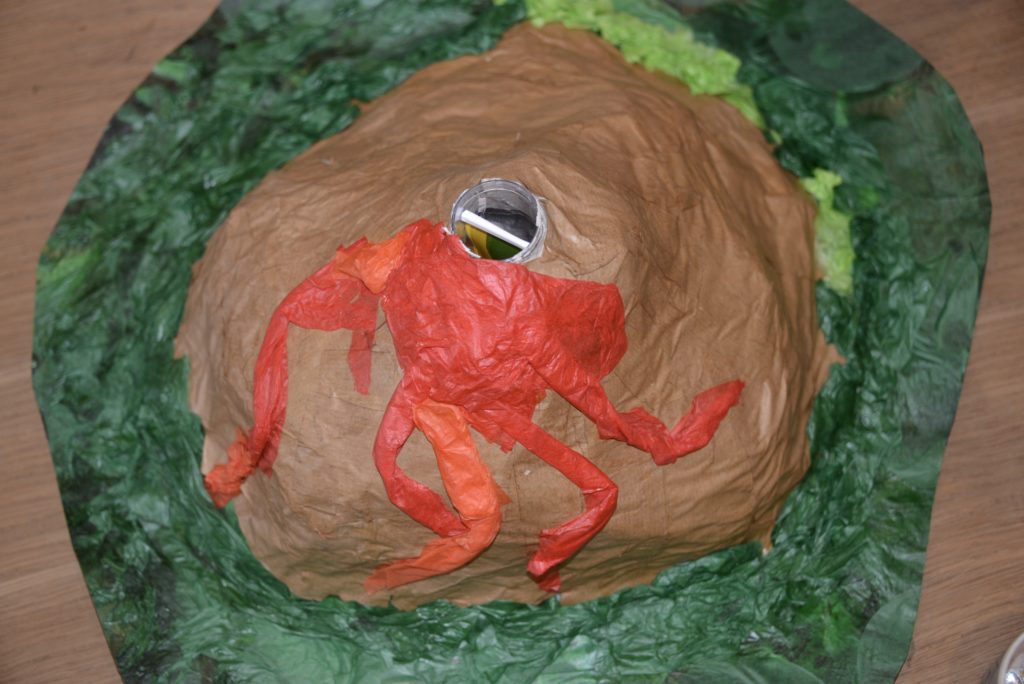
How to make a paper mache volcano
You’ll need
for the volcano
An empty water bottle ( we used a 500ml one )
Newspaper – some cut into strips
Tape
Flour and water for paper mache or mod roc
Paint
for the eruption
Two spoonfuls of baking soda (bicarbonate of soda )
One spoonful washing-up liquid ( dish soap )
A few drops of red and yellow food colouring
30 ml vinegar
Instructions
Carefully build up a volcano shape around the water bottle with scrunched-up newspaper. Tape it securely.
If using mod roc, follow the instructions on the packet and lay strips over your newspaper base around the bottle. 2 or 3 layers should be enough.

If using paper mache, lay strips of newspaper over the volcano’s base and paint the paper mache paste over the top. You might need to let it dry between layers.
Once the paper mache is completely dry, paint the volcano and leave it to dry again.
For the volcano below, we used brown paper and coloured tissue paper with paper mache paste over the top.
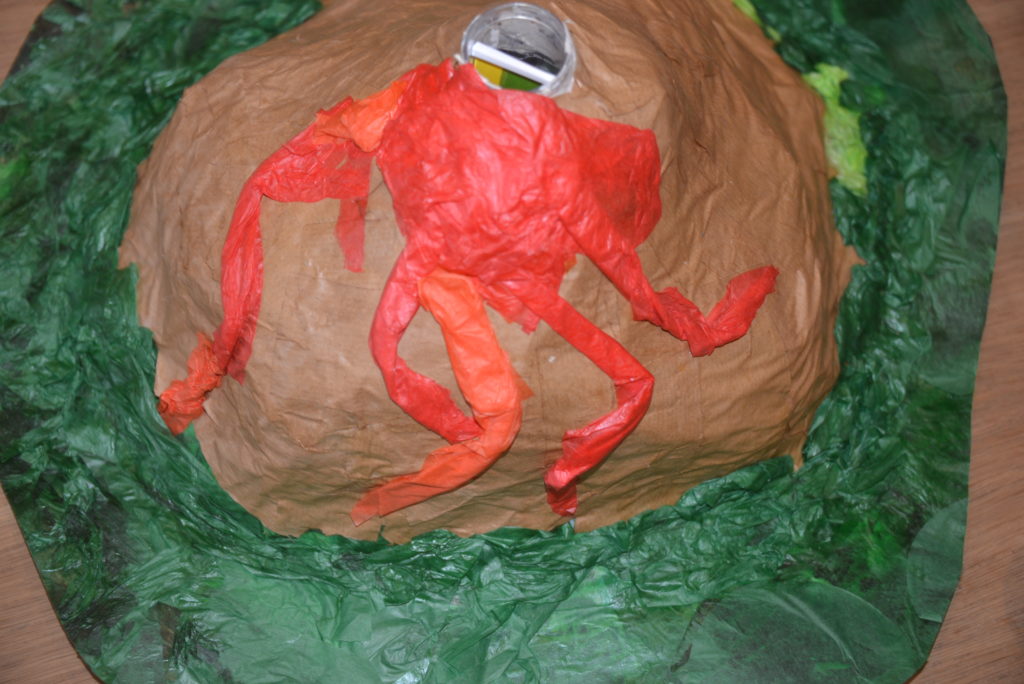
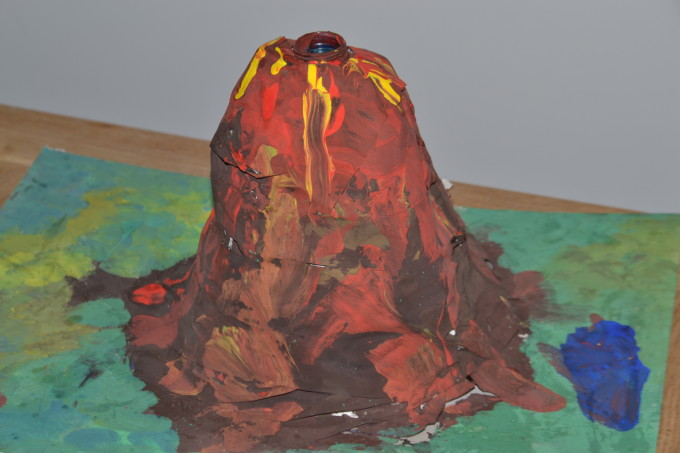
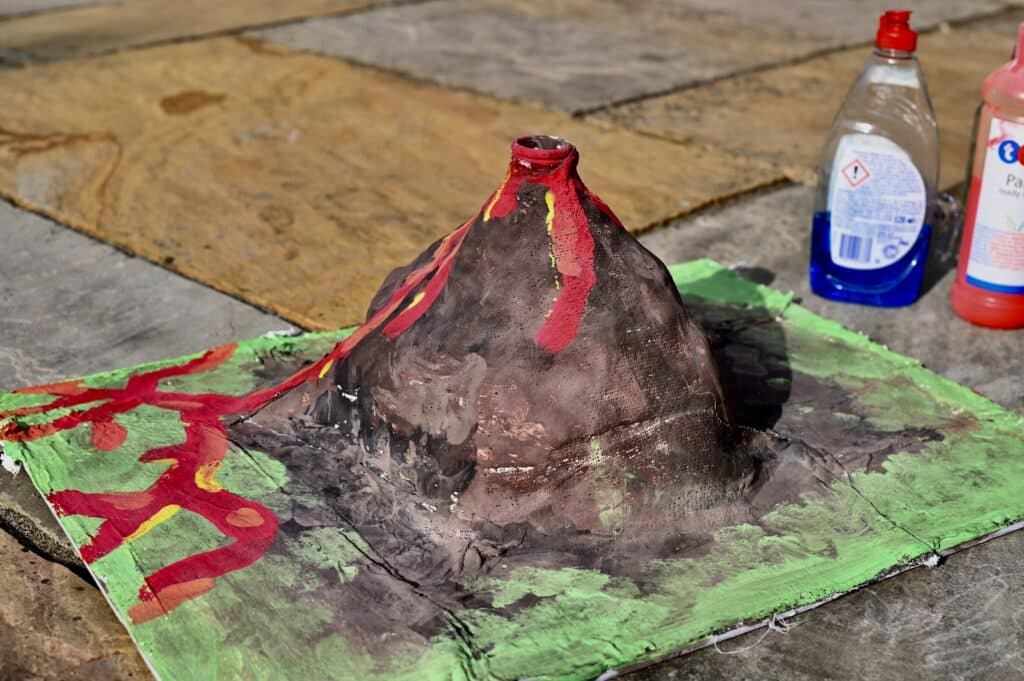
Erupt a model volcano
Add everything except the vinegar to the water bottle.
Stand back, get ready……add the vinegar and watch the eruption! If it doesn’t work well, add more washing-up liquid and vinegar.
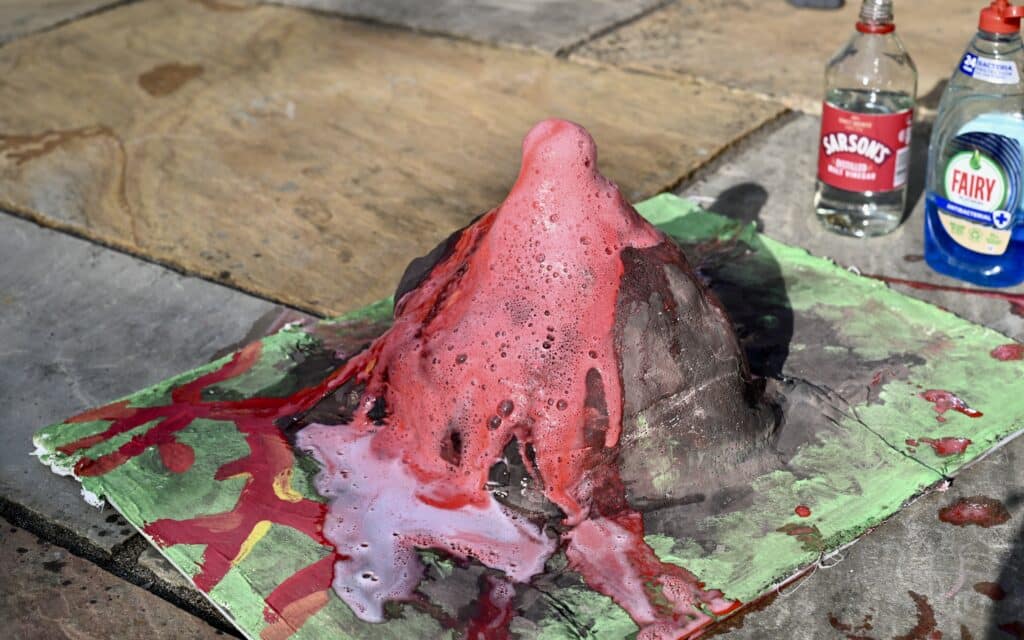
How does a baking soda volcano work?
The bubbles in the washing-up liquid are from carbon dioxide formed by the reaction between baking soda ( sodium bicarbonate ) and vinegar ( acetic acid ).
More volcano science project ideas
We made a multicoloured volcano with two different colours of food colouring and a little hack around the eruption site.
Make an underwater volcano.
A sand volcano is a quick alternative to modroc or paper mache. Build sand up around an empty bottle to make a volcano shape and set the eruption up as usual.
Learn about tectonic plates with an orange!
How about a snow volcano? Snow volcanoes are my favourite as they are very easy and fast to set up and clean away afterwards!
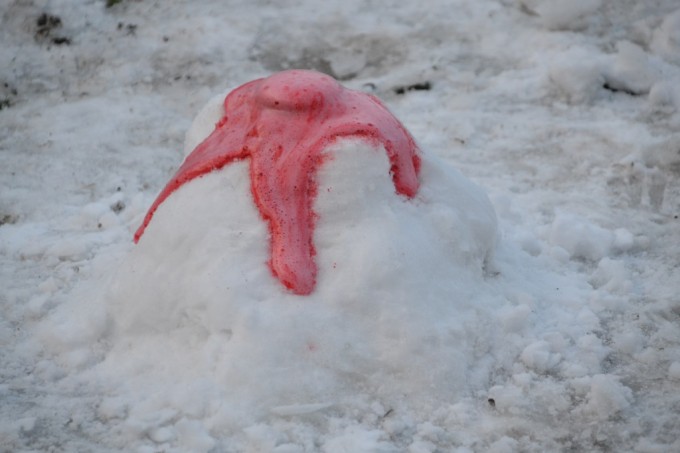
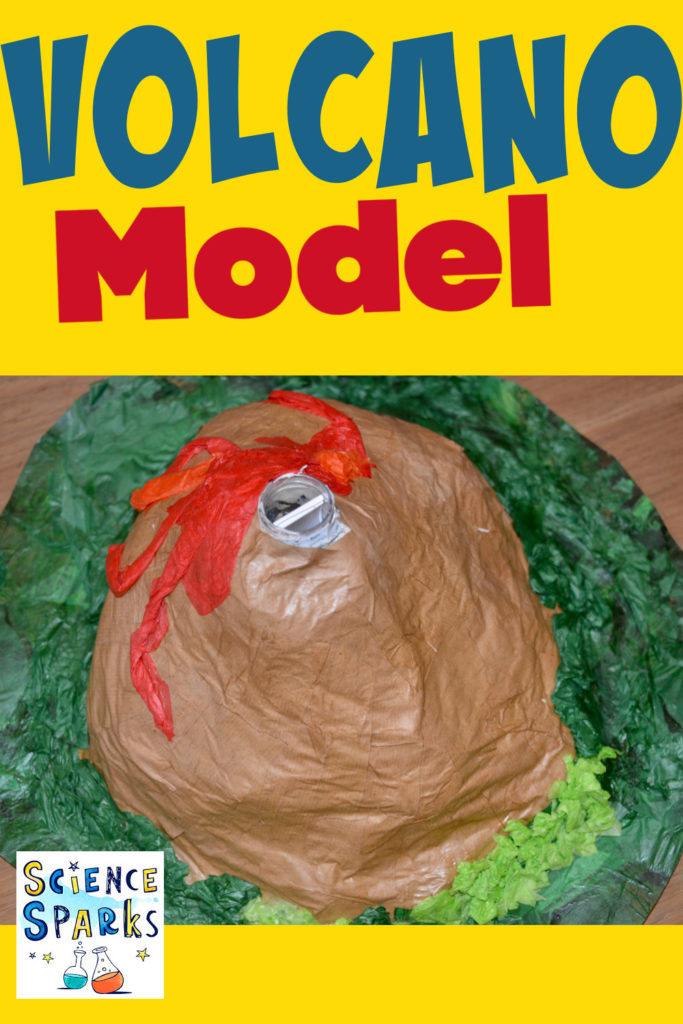
Last Updated on October 9, 2023 by Emma Vanstone

Leave a Reply